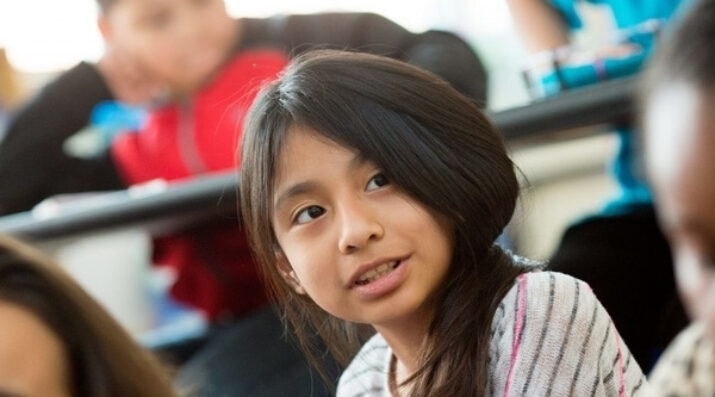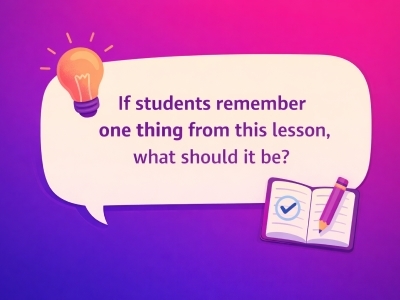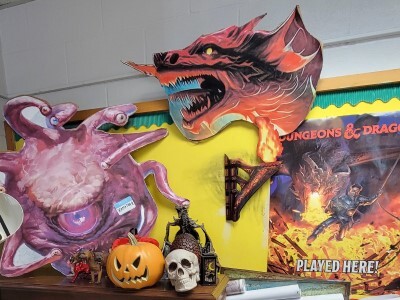Empowering Students as Authors of their Own Education
Topics

We’ve all had the experience of truly purposeful, authentic learning and know how valuable it is. Educators are taking the best of what we know about learning, student support, effective instruction, and interpersonal skill-building to completely reimagine schools so that students experience that kind of purposeful learning all day, every day.
How a Modern Project-Based Classroom Leads to the Ultimate Learner Experience
Understanding Student Agency + Student Empowerment
Student agency is one of those buzzwords in education that is often thrown out in conversation, but rarely agreed upon or understood. Frequently watered down to “voice and choice” within a classroom, the heart of student agency is lost. Student agency is about empowering the students within our classrooms to take action and complete learning that is relevant and meaningful to the learner. Students develop agency when given the capacity to act independently and in their own interest. This student autonomy often directly contrasts our current education model, in which the teacher leads, and the students “sit and get.” It is important to note that students will need scaffolding to transition from a teacher-centered classroom to a student-centered classroom and additional scaffolding to get to student-driven learning.
Developing agency is more than just expressing one’s voice in offering opinions and having a choice in a project topic of the final product. Student agency must be thread throughout the learning process, so that students take ownership of their learning, making decisions along the way to create a meaningful experience. As Phillip Williams of the NIST International School in Thailand explains, “Students with agency are able to draw on the expertise and wisdom of educators to build the knowledge, skills and understandings young people need to create meaningful and purposeful lives for themselves.” Two models of instruction are posited as having positive implications on student agency: self-pacing and project-based learning. A self-pacing model increases student ownership within a classroom, and project-based learning provides motivation and opportunities for engagement. Used independently, students have the ability to develop their own agency, but when the two are integrated together students are truly empowered to own their education and drive toward developing perseverance, resiliency, and ultimately self-efficacy that will stay with them long after their school days have passed them.
Student Agency in a Self-Paced Classroom
Self-paced classrooms empower students to engage with material in their own way and at their own pace. This gives students a level of control and fosters independence and decision making. It also boosts confidence, as Catherine Stanley reports. Self-pacing opportunities exist within all grade levels and content areas.
Students need choices to help them own their learning experience. Choice can come in many forms including classifying lessons. One framework for classifying lessons comes from the Modern Classroom Project model, where lessons are categorized into “Must Do,” “Should Do,” and “Aspire to Do.” Must Do lessons are designed to support students in achieving mastery of the content. Should Do lessons reinforce concepts through review opportunities or additional practice. Aspire to Do lessons are designed to enrich the topic and go beyond expectations.
In a Modern Classroom, students are able to determine their own “goldilocks” zone for learning—engaging in lessons that they “must do” in addition to choosing optional lessons that they either “should do” to deepen their understanding or may “aspire to do” to enrich their learning. Thus, students have the opportunity to engage at their “just right” level for that topic. In practice, this often correlates to a students’ motivation in learning about that topic. Students with particular interest in one topic may choose to complete as many Aspire to Do lessons as possible, while another student whose interests lie elsewhere may be satisfied completing the Must Do along with some Should Do assignments to reach mastery of the content.
Student Agency in a Project-Based Classroom
Project-based learning is another approach ideally suited to fostering student agency. Beginning with an essential question, project-based learning takes students on a journey of inquiry and engagement in an authentic manner to reach their own conclusion. Embedded within a project are numerous opportunities for students to use their voice to determine their own approach to addressing the essential question. Students also demonstrate improved attitudes toward learning, building a sense of self-efficacy as they reach each project milestone. Much like in a self-paced classroom, student choice is also prevalent in the types of activities they choose to engage with to learn the topic at the level they desire.
Also embedded within a rigorous project-based learning experience are opportunities for students to develop a sense of purpose and ownership over their project. While a teacher may design the framework for a project, project-based learning allows the students to take initiative to craft the rest of the project-experience in a way that is meaningful to them.
The Ultimate Empowerment: Student Agency in a Modern Project Based Classroom
Classrooms that integrate self-pacing and project-based learning are designed to empower students at the highest level. These modern project-based classrooms offer an ideal set up for a student to take the reins and craft the learning experience they desire to master the material at a personal and meaningful level. Students engage in content, process, and product creation in a way that is uniquely crafted by the individual. Each student has the opportunity to let their strengths shine in this approach—choosing pathways to both knowledge attainment and demonstration of knowledge that is best suited for them. Students become the authors of their own education as they construct the ultimate learning experience.
As we think about how to best prepare our learners for this 21st century, we need to create opportunities for students to develop and exercise agency through their learning process. Constructing classrooms with self-paced models or project-based learning will provide students an opportunity to develop the skills needed to take them into the modern workplace. However, when combined, they form a powerhouse of student agency opportunities to drive student learning into the 21st century and beyond.
Photo at top courtesy of Allison Shelley/The Verbatim Agency for American Education: Images of Teachers and Students in Action.




